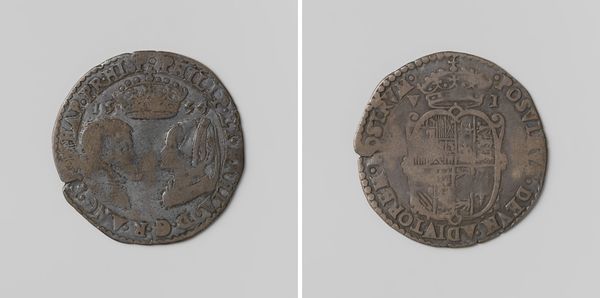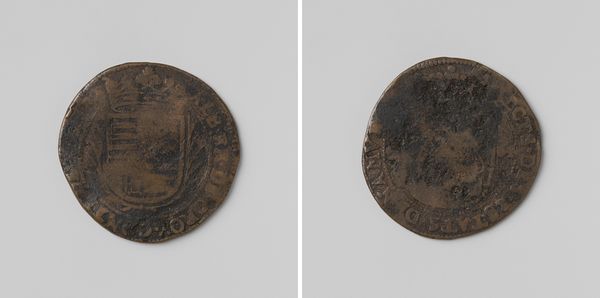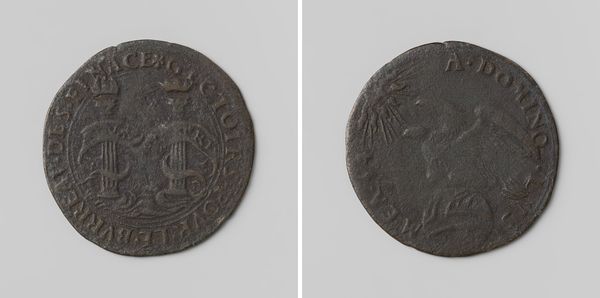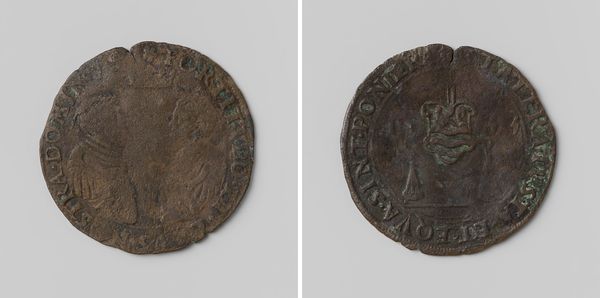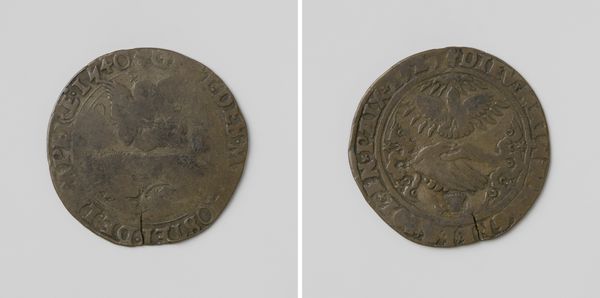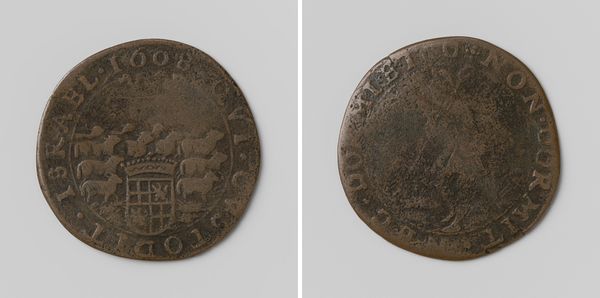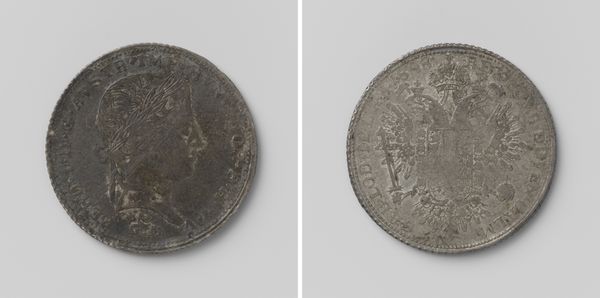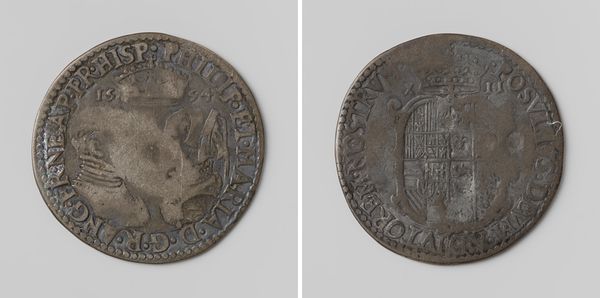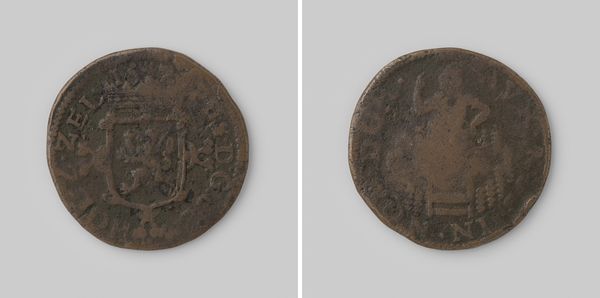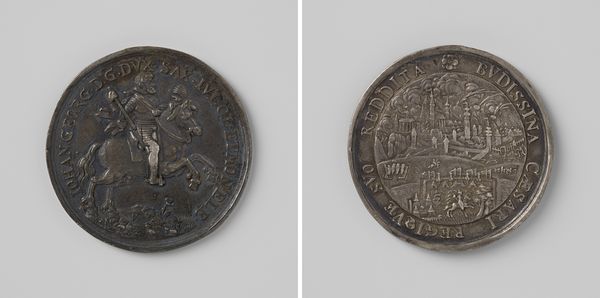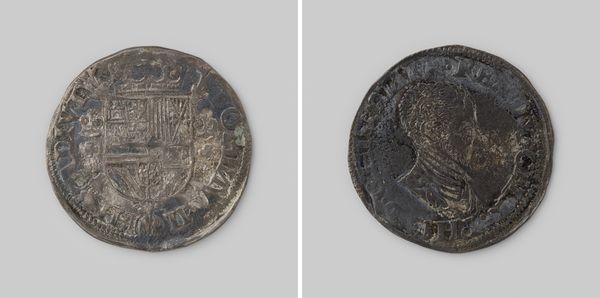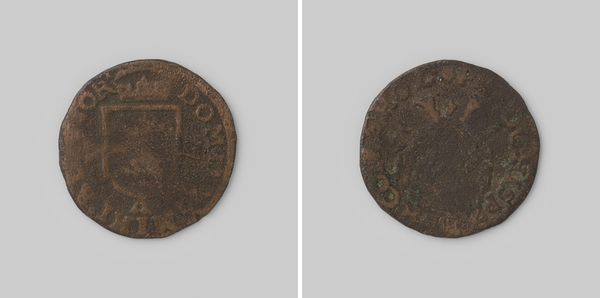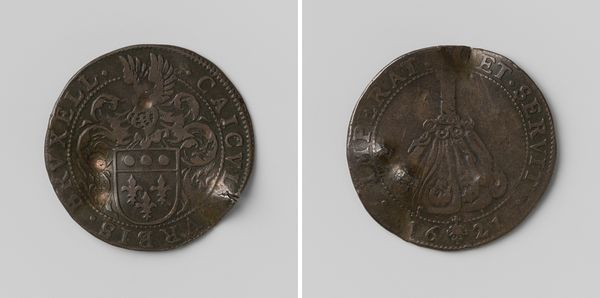
print, metal, relief
#
portrait
#
baroque
# print
#
metal
#
sculpture
#
relief
#
history-painting
Dimensions: diameter 2.8 cm, weight 4.27 gr
Copyright: Rijks Museum: Open Domain
This is a Zutphen rider shilling, made in 1688 from silver. Minted by the city of Zutphen, this coin speaks volumes about the intertwining of power, labor, and material culture. The cool, weighty metal was mined, refined, and then struck with dies to impress the images. The resulting coin is not just a token of monetary exchange, but also a symbol of civic authority and a testament to the skilled labor involved in its production. Notice the heraldic shield and the equestrian figure, both signs of status and might. The techniques used to create this coin – engraving, die-making, and striking – connect it to a much longer history of metalworking and craftsmanship. It represents a complex relationship between artistry, economics, and social order. By considering the material and the making, we can appreciate how even an everyday object like a coin is embedded with social and cultural significance, blurring the boundaries between art, craft, and commerce.
Comments
No comments
Be the first to comment and join the conversation on the ultimate creative platform.
